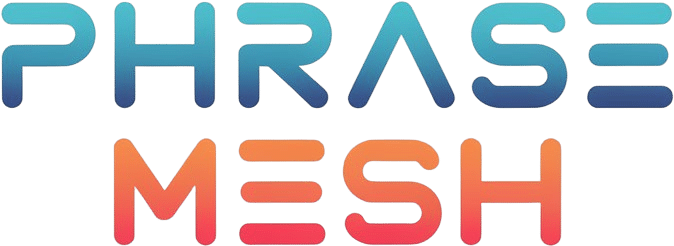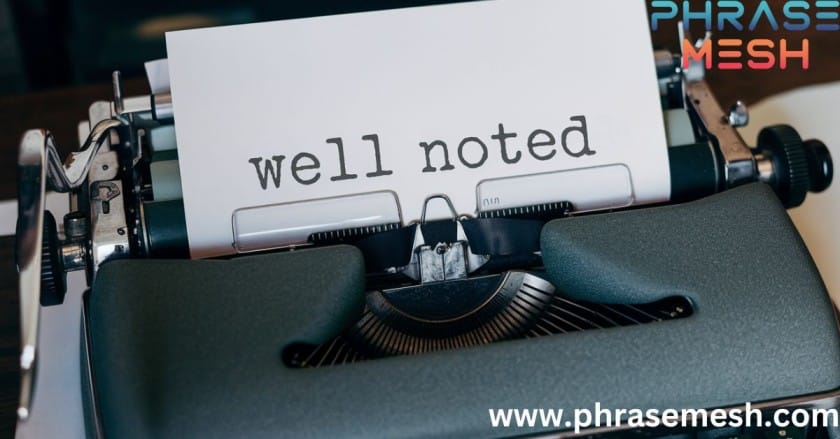In professional communication, a simple “Well Noted” can sometimes feel too standard or even distant. Whether you’re confirming receipt of information, acknowledging a task, or expressing agreement, there are plenty of ways to communicate the same sentiment with a bit more personality.
This article dives into 20 creative alternatives to “Well Noted” to help you keep your emails fresh, engaging, and impactful. By using varied responses in place of “Well Noted,” you’ll connect better with colleagues and clients alike, making your message both memorable and clear. So if you’re looking for ways to replace “Well Noted” in emails, you’ve come to the right place!
Is It Professional to Say “Well Noted”?
Yes, saying “Well Noted” is generally considered professional and concise in most workplace settings. It’s a quick way to confirm you’ve received and understood information, which can be useful in a fast-paced environment.
For instance, if a manager outlines specific instructions, replying with “Well Noted” shows acknowledgment without unnecessary detail. However, depending on the context, “Well Noted” can feel a bit impersonal, so it’s good to have alternatives on hand to fit different tones.
Pros:
- Concise Confirmation: It’s brief and gets the point across.
- Professional Tone: Maintains a formal tone in business settings.
- Widely Accepted: Commonly understood across various industries.
Cons:
- Lacks Clarity: Doesn’t indicate specific understanding or next steps.
- Lacks Warmth: May come across as too cold or distant.
- Can Seem Rigid: Not ideal in friendly or casual settings.
What To Say Instead of “Well Noted” in an Email
- I’ve received and reviewed your message
- Thank you for keeping me in the loop
- I appreciate the update
- Got it, thanks for clarifying
- I understand and will proceed accordingly
- Duly noted and actioned
- Thanks for bringing this to my attention
- Message received and under review
- I acknowledge receipt and understand the requirements
- Confirmed and noted with thanks
- I’ve taken this into consideration
- This information has been recorded
- I’m on the same page
- Your input has been registered
- I’ve logged your request
- This aligns with my understanding
- You have my acknowledgment
- I’m processing this information
- Consider this acknowledged
- This is captured in our records
These professional email phrases cover a range of formality levels, from casual to highly formal, making them suitable for various business correspondence situations. Choose the one that best matches your relationship with the recipient and the context of your communication.
Remember that effective email communication phrases should always maintain proper business email etiquette while clearly confirming receipt of information.
pro tip:
Elevate Your Acknowledgments with Style!
1. “I’ve received and reviewed your message”

This formal acknowledgment shows you’ve not just seen the email but actually processed its contents.
Example:
“Dear Marcus, I’ve received and reviewed your message about the upcoming client presentation. I’ll have the slides ready by Thursday as requested. Best regards, Sarah”
2. “Thank you for keeping me in the loop”
Perfect for acknowledging emails when someone shares updates or information. It sounds friendly while maintaining professionalism.
Example:
“Hi Jessica, Thank you for keeping me in the loop on the project timeline changes. This helps us adjust our resource allocation accordingly. Cheers, David”
3. “I appreciate the update”
When looking for email response options, this phrase shows gratitude while confirming receipt. It’s warm yet professional.
Example:
“Dear Team, I appreciate the update on the quarterly results. The growth numbers look promising, and I look forward to discussing them in our next meeting. Regards, Michael”
4. “Got it, thanks for clarifying”
Sometimes, shorter responses work better. This casual yet professional response follows proper business email etiquette while keeping things concise.
Example:
“Hi Alex, Got it, thanks for clarifying the deadline extension. I’ll make sure to submit the report by next Friday. Best, Rachel”
5. “I understand and will proceed accordingly”

This response combines confirming receipt with action, making it particularly useful in professional settings.
Example:
“Dear Dr. Thompson, I understand and will proceed accordingly with the research protocol changes. I’ll implement these updates starting Monday. Kind regards, Emma”
6. “Duly noted and actioned”
Among various ways to acknowledge information, this phrase indicates both understanding and proactive response.
Example:
“Hi Jamie, Duly noted and actioned regarding the client’s feedback on the design. I’ve already started incorporating their suggestions. Thanks, Chris”
7. “Thanks for bringing this to my attention”
This phrase works well when someone highlights important information, making it a valuable addition to your email communication phrases.
Example:
“Dear Patricia, Thanks for bringing this to my attention regarding the system upgrade. I’ll coordinate with IT to ensure minimal disruption. Best wishes, Robert”
8. “Message received and under review”
Perfect when you need time to process information but want to confirm receipt – a staple in professional responses.
Example:
“Hi Leadership Team, Message received and under review regarding the proposed organizational changes. I’ll share my detailed feedback by end of week. Regards, Thomas”
9. “I acknowledge receipt and understand the requirements”
This formal phrase works well in situations requiring clear follow-up confirmation.
Example:
“Dear Vendor Team, I acknowledge receipt and understand the requirements for the new supply chain protocol. We’ll begin implementation next month. Best regards, Laura”
10. “Confirmed and noted with thanks”

A polite way to show something’s been accepted and confirmed while expressing gratitude.
Example:
“Hi Mark, Confirmed and noted with thanks regarding the budget approval. I’ll proceed with the vendor negotiations. Kind regards, Sophia”
11. “I’ve taken this into consideration”
This phrase shows active engagement with the information while maintaining professional language.
Example:
“Dear Jordan, I’ve taken this into consideration regarding the marketing budget adjustments. I’ll revise our Q2 plans accordingly. Best regards, Nina”
12. “This information has been recorded”
A formal yet straightforward way of confirming receipt that works well in documentation-heavy situations.
Example:
“Hi Procurement Team, This information has been recorded for the upcoming vendor audit. We’ll include it in our compliance report. Thanks, Harrison”
13. “I’m on the same page”
For more casual business email etiquette, this phrase confirms understanding while keeping things friendly.
Example:
“Hey Sam, I’m on the same page with your suggestions for the team building event. Let’s discuss the details in tomorrow’s catch-up. Cheers, Maya”
14. “Your input has been registered”
Among formal ways to acknowledge information, this phrase works particularly well in administrative contexts.
Example:
“Dear Stakeholders, Your input has been registered regarding the proposed policy changes. We’ll address each point in the next committee meeting. Regards, Daniel”
15. “I’ve logged your request”

When looking for professional email phrases, this option shows both acknowledgment and action.
Example:
“Hi Technical Support, I’ve logged your request for additional server capacity. Expect implementation details by EOD. Best, Raj”
16. “This aligns with my understanding”
A sophisticated way to show agreement while confirming receipt of information.
Example:
“Dear Professor Williams, This aligns with my understanding of the research parameters. I’ll proceed with the data collection phase. Kind regards, Elena”
17. “You have my acknowledgment”
For situations requiring formal acknowledgment, this phrase carries appropriate weight.
Example:
“Dear Board Members, You have my acknowledgment of the strategic direction outlined. I’ll prepare the implementation roadmap. Sincerely, Victoria”
18. “I’m processing this information”
When you need time but want to send quick professional responses, this phrase works well.
Example:
“Hi Finance Team, I’m processing this information about the budget reallocation. I’ll schedule a review meeting once I’ve analyzed the implications. Best regards, Trevor”
19. “Consider this acknowledged”
A direct yet professional way to handle email response options in fast-paced environments.
Example:
“Dear Operations Team, Consider this acknowledged regarding the maintenance schedule changes. I’ll update our department’s workflow accordingly. Thanks, Lauren”
20. “This is captured in our records”

Perfect for business correspondence requiring formal documentation.
Example:
“Hi Legal Department, This is captured in our records regarding the contract amendments. We’ll proceed with the updated terms. Best wishes, Marcus”
Best Practices for Using These Acknowledgments
When using these well noted alternatives, consider:
- Match the Tone: Align your response with your company’s communication style
- Add Value: Include relevant follow-up information when appropriate
- Be Timely: Acknowledge important messages promptly
- Stay Consistent: Use similar levels of formality with the same contacts
Situations Where These Alternatives Work Best
Different contexts call for different professional language:
- Formal Business Settings
- Client Communications
- Internal Team Updates
- Project Management
- Legal or Compliance Matters
Making Your Response More Effective
To enhance your email communication phrases:
- Add specific details from the original message
- Mention any next steps
- Include relevant deadlines
- Express appreciation when appropriate
Conclusion
These additional alternatives for “well noted” help diversify your professional communication toolkit. By choosing the right phrase for each situation, you’ll maintain professionalism while avoiding repetitive language. Remember, effective communication isn’t just about acknowledging emails – it’s about building and maintaining professional relationships through thoughtful, clear responses.
Whether you’re dealing with internal teams or external stakeholders, having these alternatives at your disposal ensures your business correspondence remains fresh and engaging. Keep practicing these phrases, and they’ll become natural parts of your professional communication style.
frequently asked questions:
1. What does “Well Noted” really mean in an email?
It shows you’ve received and understood the information. But there are more engaging ways to respond!
2. Why should I avoid saying “Well Noted”?
“Well Noted” can sound flat or impersonal. Learn better alternatives to keep your tone professional yet approachable.
3. What can I say instead of “Well Noted” in a formal email?
Try phrases like “Understood” or “Acknowledged, thank you.” These add clarity and warmth to your message.
4. Are there casual alternatives to “Well Noted” that still sound professional?
Absolutely! Phrases like “Got it, thanks!” or “I’ll take care of it” sound friendly yet respectful.
5. How can I make my responses sound more engaging than “Well Noted”?
Switch it up! Explore 20 alternatives to keep your emails fresh, clear, and engaging for any audience.





